The best food in Italy will probably be familiar to you. With Italian cuisine having held such a dominant place in the Western kitchen since the second half of the 20th century, many of the country’s most famous dishes have already been transported overseas to thunderous acclaim.
Of course, if you asked an Italian about their opinion on what was the best Italian food, they’d probably cite an obscure recipe of their nonna’s.
But if you aren’t fortunate enough to have an Italian grandmother, then read on to discover some of Italy’s most iconic dishes, which, of course, always taste better in the homeland.
Bistecca alla Fiorentina
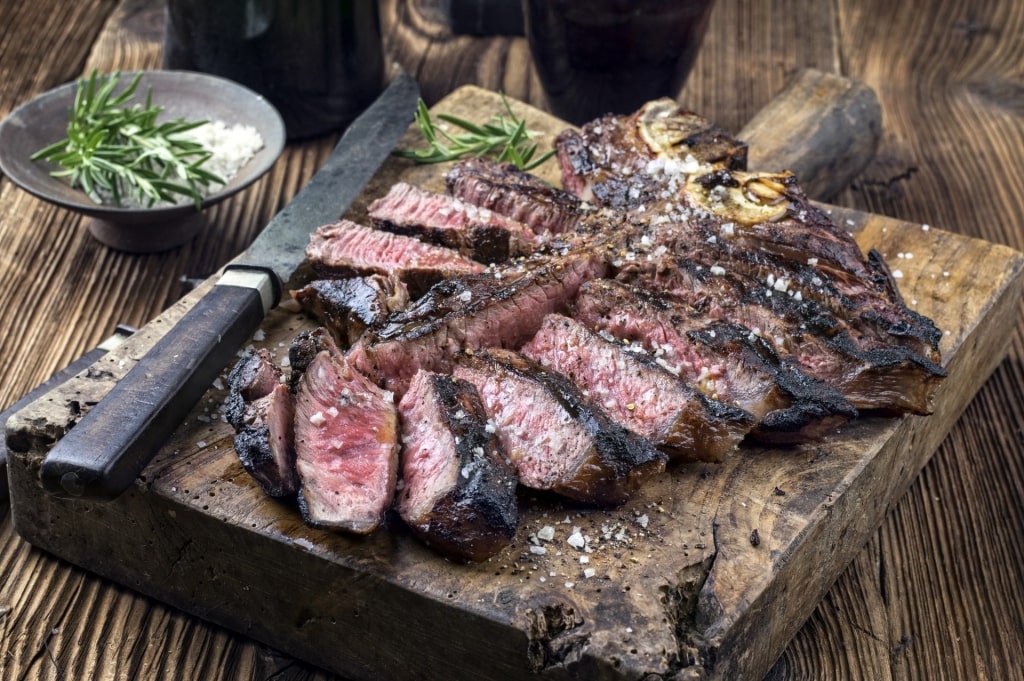
Bistecca alla Fiorentina
This monster porterhouse steak hails from Florence, Tuscany. With such an expensive cut of meat, it’s unsurprising that this recipe reaches back to the Renaissance glory days of Florence when the outrageously wealthy Medicis held sway.
The meat itself is typically procured from the bone-white Chianina cows, a breed renowned for its flavorsome flesh. With that innately Italian respect for quality ingredients, your two-to-eight-pound bistecca alla Fiorentina will arrive before you mostly unadulterated.
The popular Florentine dish asks only for a drizzle of olive oil, before the meat seared above olive wood and oak charcoal.
Simply seasoned with salt and pepper, the steak comes rare. As you’re ideally eating this in the land of the mangiafagioli, or “bean-eaters” as the Tuscans are known, it’s usually accompanied by a pot of pearly, parsley-strewn cannellini beans.
Cannoli

Cannoli
Wonderfully rich and ornate, yet somehow everyday, cannoli is arguably Italy’s best-known pastry dish.
Originally a treat served during Christmas, this sweet ricotta-filled pastry tube emigrated with immigrant families to achieve eventual global domination. While recipes vary, the classic version has orange zest mixed into the ricotta filling, elevating the sensory delight.
To ensure the freshest, most artfully wrought cannoli, find an Italian pasticceria that fills the sugar-dusted tube when you order, as opposed to offering you a ready-made one.
Lasagna
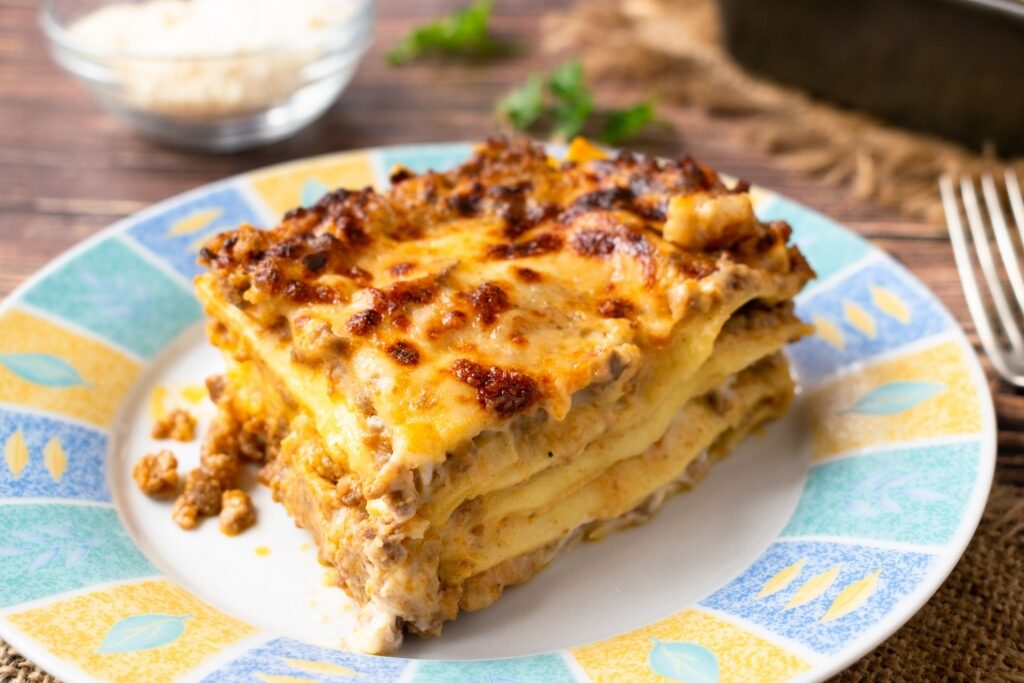
Lasagna
An example of the best food in Italy that’s also one of the best dishes outside of Italy, lasagna is one of the international standard-bearers for the heights comfort food can reach.
However, you’ll often find the recipe altered to local tastes. To discover what original Italian lasagne truly tastes like, you need to travel to a trattoria in Italy.
What goes into lasagna is more or less ubiquitous in Italy, although minor variations do occur. For traditionalists, a Bolognese sauce, simmered for no less than three hours, is essential. And there must be seven sheets of pasta, a symbolically important number in this predominantly Catholic country.
Further richness is imbued with the addition of bechamel sauce, while optional extras you might encounter include truffles, porcini mushrooms, minced liver, and a blizzard of Parmigiano Reggiano.
Margherita Pizza
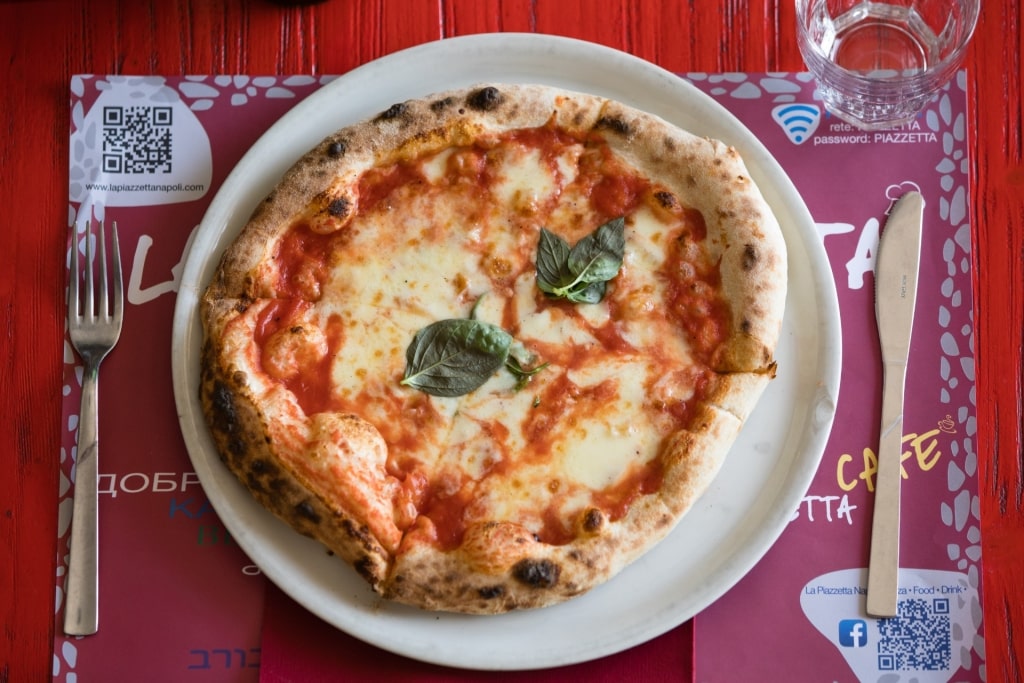
Margherita pizza
The anchor of all self-respecting pizza menus the world over, the simple Margherita, with its gently harmonious flavors, feels like the original template for all modern pizza.
It’s remarkable then that such a delicate, simple recipe should hail from coastal Naples, one of Italy’s most exciting food cities.
The most widespread origin story for this recipe is that it all began at Pizzeria Brandi in Naples (still operational today) in honor of the visit of Queen Margherita of Savoy in 1889.
The pizzeria’s basil, mozzarella, and tomato creation captured her queenly taste buds, while the fact that the ingredients conjured up the white, green, and red of the national flag no doubt eased the royal digestion.
Read: Where to Find the Best Pizza in the World
Risotto
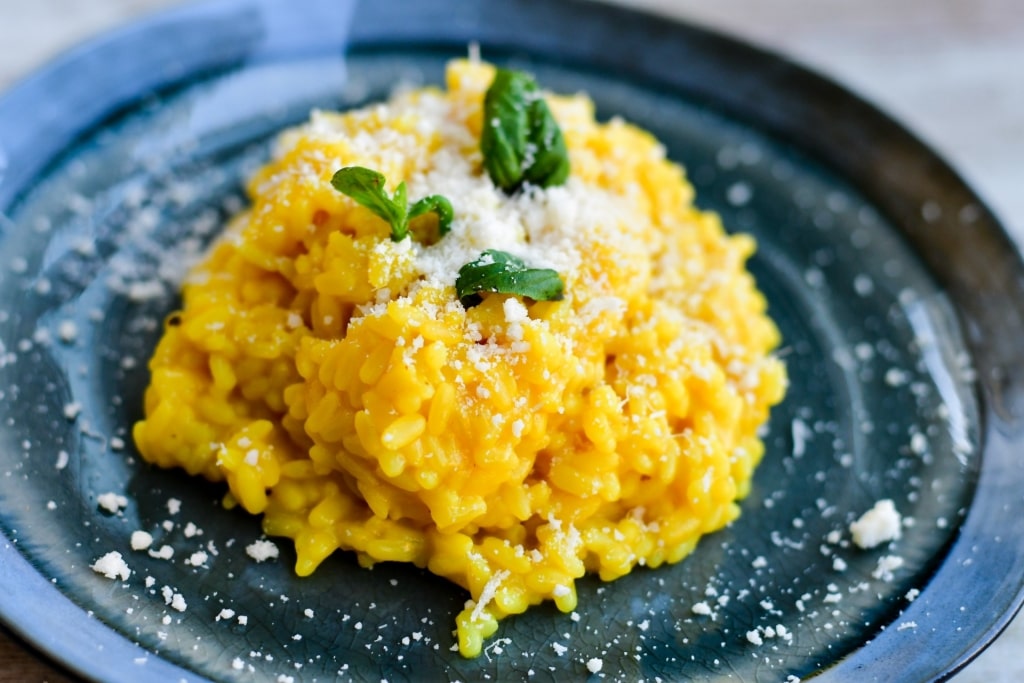
Risotto
Risotto, a classic comfort food seemingly designed for damp mid-autumn evenings, hails from Italy’s north.
Here, during winters that dust the Alps and Apennines in snow, the medieval Italians concocted dishes with butter bases and heaps of cheese to fuel the field workers enduring inclement conditions.
In Italy today, risotto (a mix of arborio rice, wine, butter, and Parmigiano Reggiano) is typically served as a hearty appetizer ahead of the main dish.
Its most famous recipes include risotto alla Milanese (infused with saffron) and risotto ai funghi (mixed with mushrooms).
Arancini
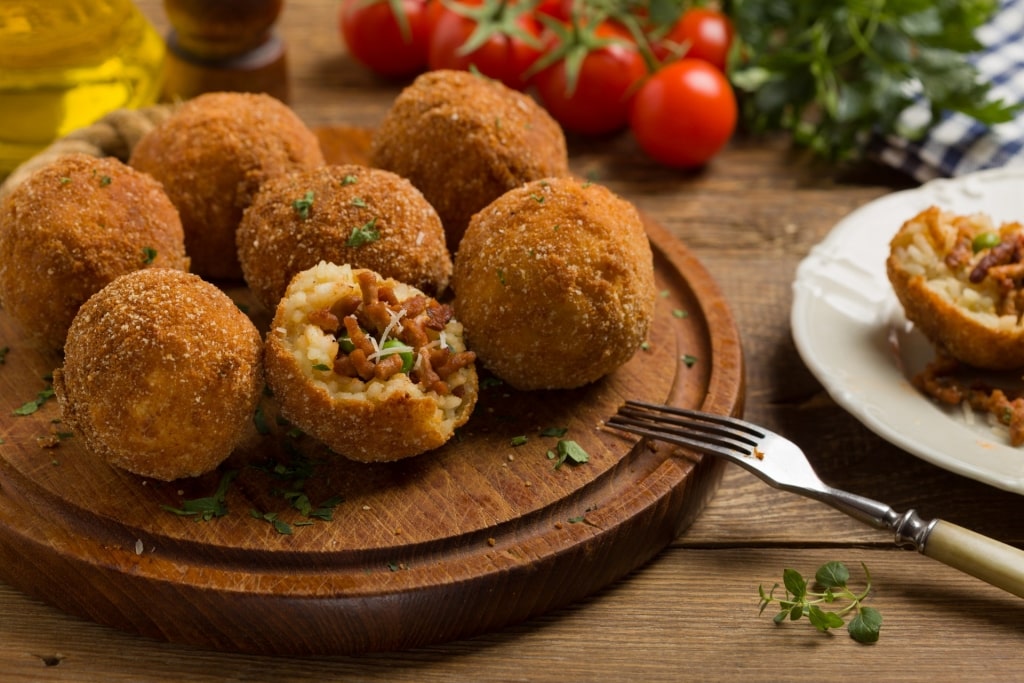
Arancini
Arancini is a typical street food that is, in Italy, almost as prevalent as pizza. The obsession with these delicious fried orbs of cheese and rice began with the arrival of the Arabs on the fertile shores of Sicily in the 10th century.
A mix of rice, tomato sauce, and mozzarella, these snacks are shaped into balls before being deep-fried. The crumbed outer coating turns orange with cooking, which, along with the shape, gives the dish its name (arancini means “oranges” in Italian).
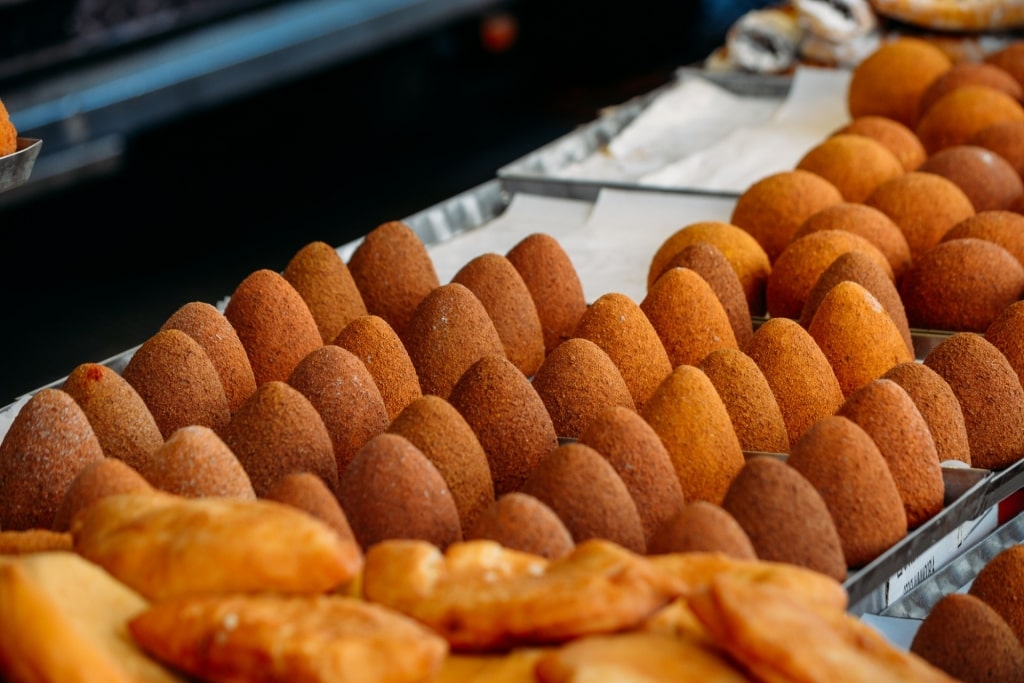
Arancini
However, if you visit the engaging city of Catania in Sicily, you’ll find the arancini there made with a pointed top, like a Hershey’s Kiss.
Read: The Ultimate Sicilian Food Guide
Gnocchi
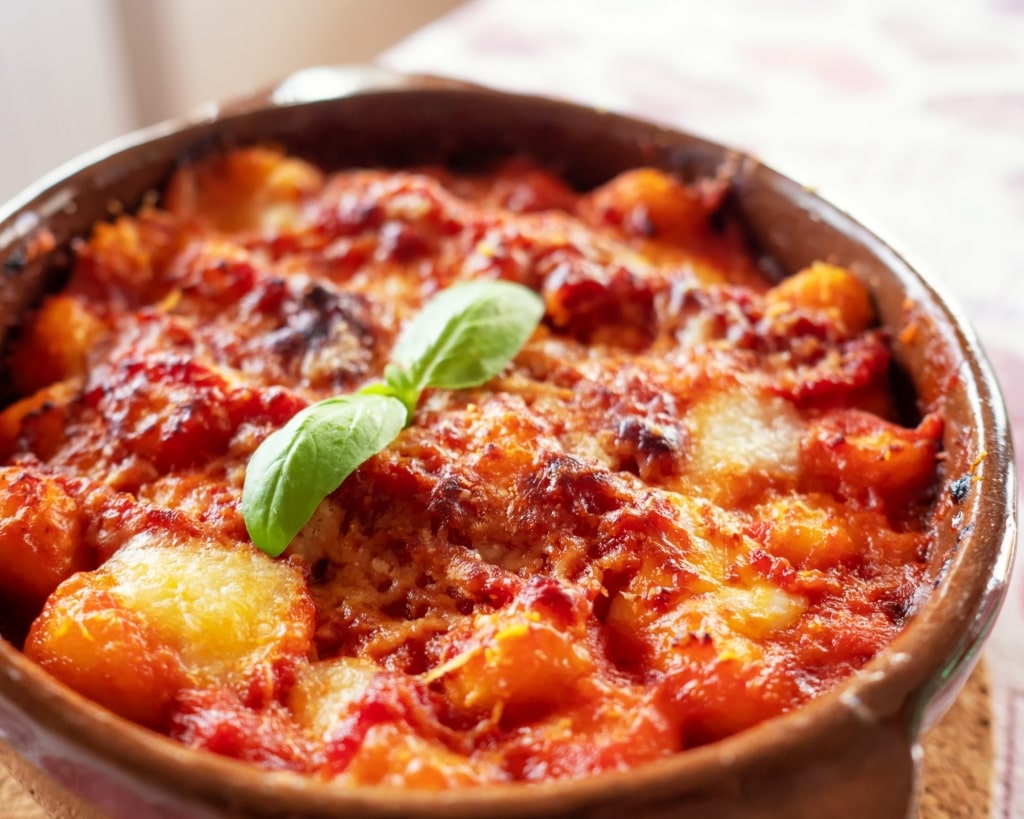
Gnocchi
This unique pasta/potato hybrid is believed to have been influenced by the dumplings of the Middle East. The creation of light and pillowy gnocchi involves keeping a careful eye on the balance of flour and potato as you shape the wine-cork-sized pieces of dough.
Gnocchi, a divine stomach warmer (and filler) in the darker months, is often served in Italy as an appetizer.
A classic recipe is gnocchi alla Sorrentina, where the pasta is served in a tomato sauce alongside a trio of cheeses and fragrant basil. Travel to sunny Sorrento to try this deeply satisfying dish at its source.
Caprese Salad
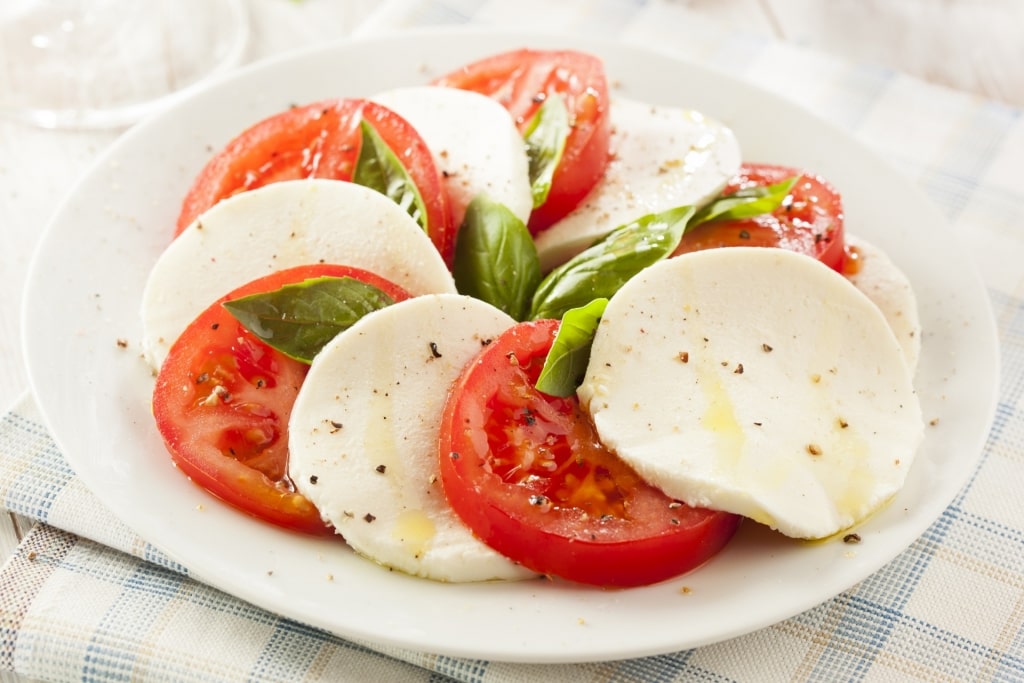
Caprese salad
Another example of the best food in Italy that ascribes to a notion of culinary patriotism, Caprese Salad unites mozzarella, tomatoes, and basil leaves to create a deconstructed Italian flag in your salad bowl.
Hailing from the southerly region of Campania, this salad is a simple layering of that trio of top-notch ingredients. Extra-virgin olive oil, salt and pepper, and a balsamic glaze are added to complete this delightfully uncomplicated dish.
The salad is named after the island of Capri. A refreshing Caprese salad eaten on the island, with a glass of chilled Greco di Tufo at a table with a view of the famous Faraglioni, would definitely count as a landmark salad moment.
Tagliatelle With Ragù

Tagliatelle with ragù
Naturally, with ragù being so delicious, it was never going to remain smothered beneath seven sheets of lasagna forever.
One of Bologna’s classic dishes, although available anywhere from northerly Santa Margherita to southerly Brindisi, tagliatelle with ragù makes the most of the umami hit that this slow-simmered sauce of chuck beef, milk, red wine, and unsmoked pancetta delivers.

Tagliatelle with ragù
The slippery ribbons of fresh egg tagliatelle are the perfect vehicle for this meaty sauce. Their width is better for balancing the lightness of the pasta with the heaviness of the sauce than the more widely used spaghetti.
For a final balancing act, let flat-leaf parsley rain down alongside the Parmigiano Reggiano. The herb’s sharpness is the ideal foil for the rich cheese.
Ribollita
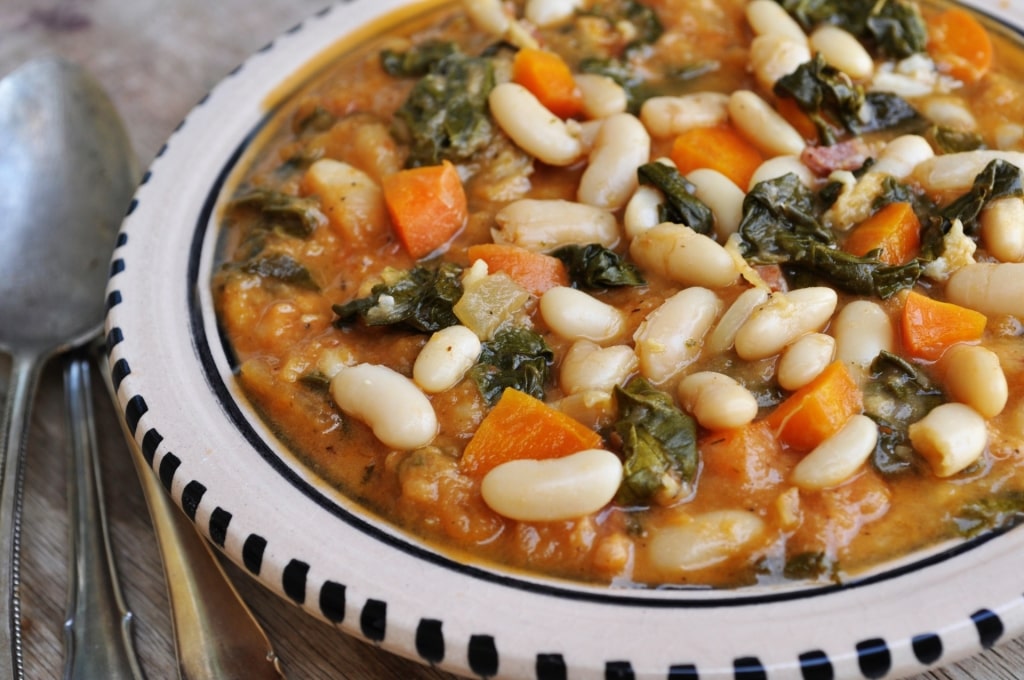
Ribollita
This Tuscan stew is a superb example of cucina povera—the section of Italian gastronomy that hails from the kitchens of the rural poor.
Ribollita means “re-heated” in Italian. One colorful theory about the name’s origins is that the servants of medieval lords would gather the leftovers from banquets and reheat them in a stew.
Alternatively, this name refers to a significant step in ribollita’s preparation, when the stew is reheated the following day after being left to sit overnight. This resting period is intended to allow the flavors of cavolo nero, cannellini beans, and whatever else has made it in the pot, to meld.
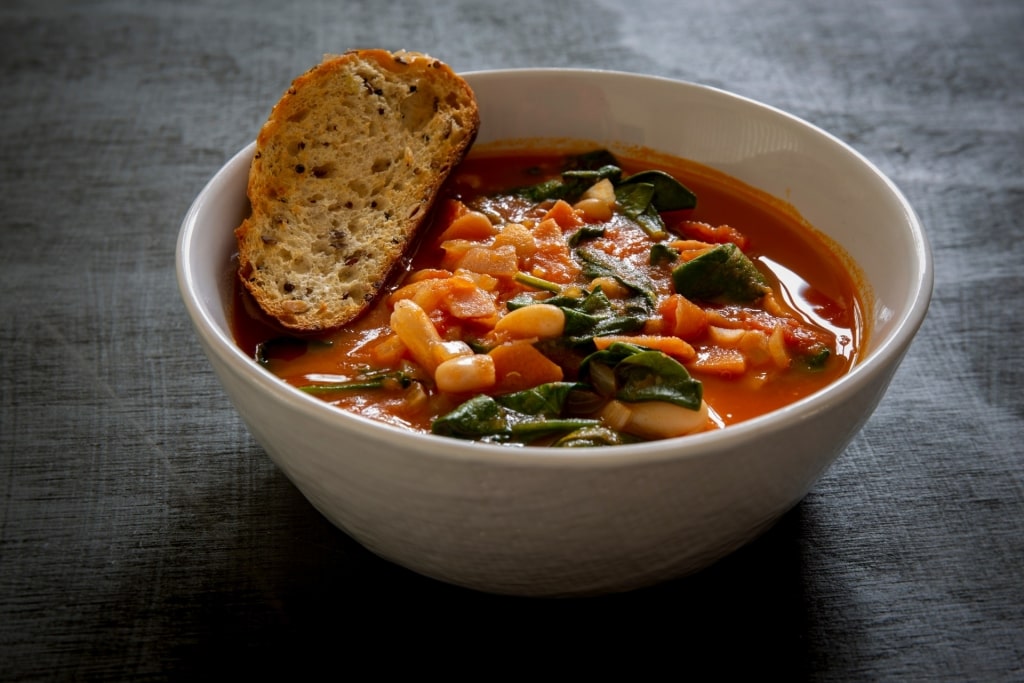
Ribollita
The popular Tuscan dish is then served on top of slices of pane sciocco—the region’s famously unsalted loaf. A full-bodied Chianti also goes well with this healthy, hearty bowlful.
Trofie Al Pesto
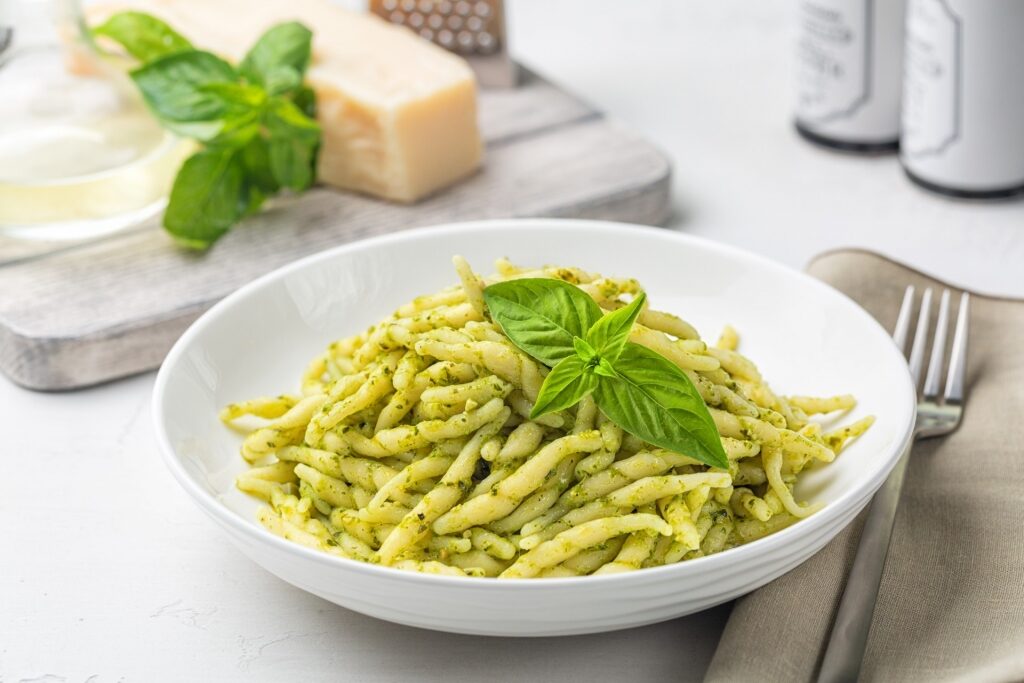
Trofie al pesto
Pesto is one of Italy’s most successful sauces, vivacious green magic released from the mashing together of basil, pine nuts, Parmigiano Reggiano, garlic, olive oil, and a dash of pecorino.
You can do this in a blender, although at the annual Pesto World Championships in Genoa, only the traditional mortar and pestle are allowed.
The natural partner to pesto is trofie, a tiny, wiggly baguette of dough that’s the regional pasta of Liguria.
Coated with Genoese pesto, the flavor is bright and deep. Your best chance of recreating this at home is to make handmade trofie and to find, or grow, Italian basil which has smaller, more flavorful leaves.
Spaghetti Alle Vongole
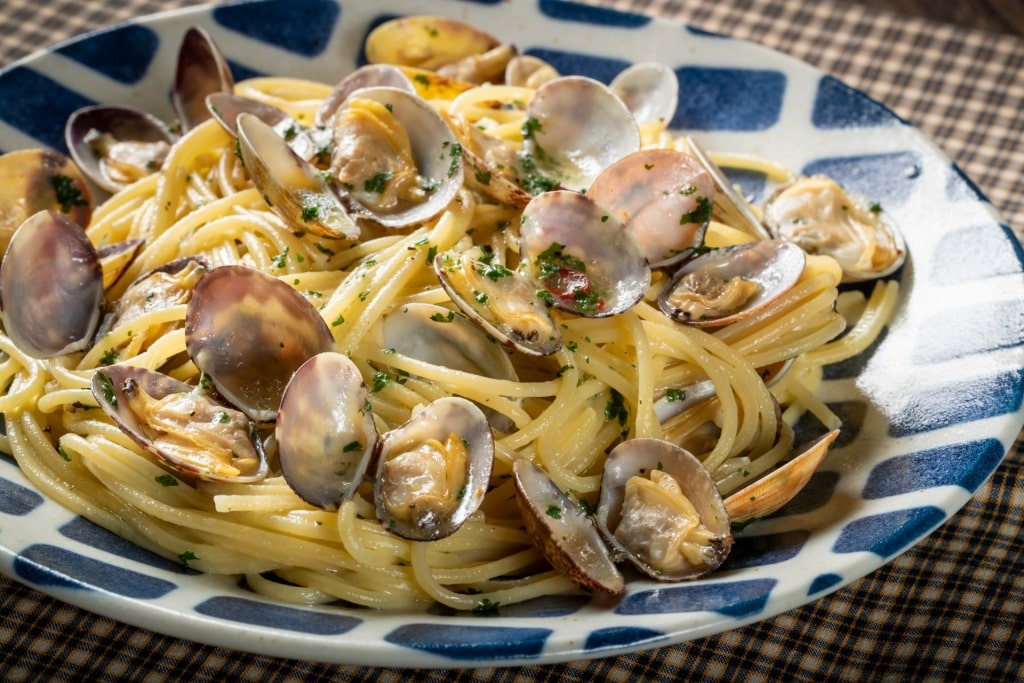
Spaghetti alle vongole
While it may have its origins near the adjacent regions of Campania and Lazio, spaghetti alle vongole is now omnipresent in seaside towns around Italy.
Its success is in its simplicity. Leggy spaghetti is entwined with fresh clams cooked in the garlic, white wine, and olive oil sauce that lacquers the entire dish. A dash of chili flakes adds an extra culinary spark amid the briny brilliance.
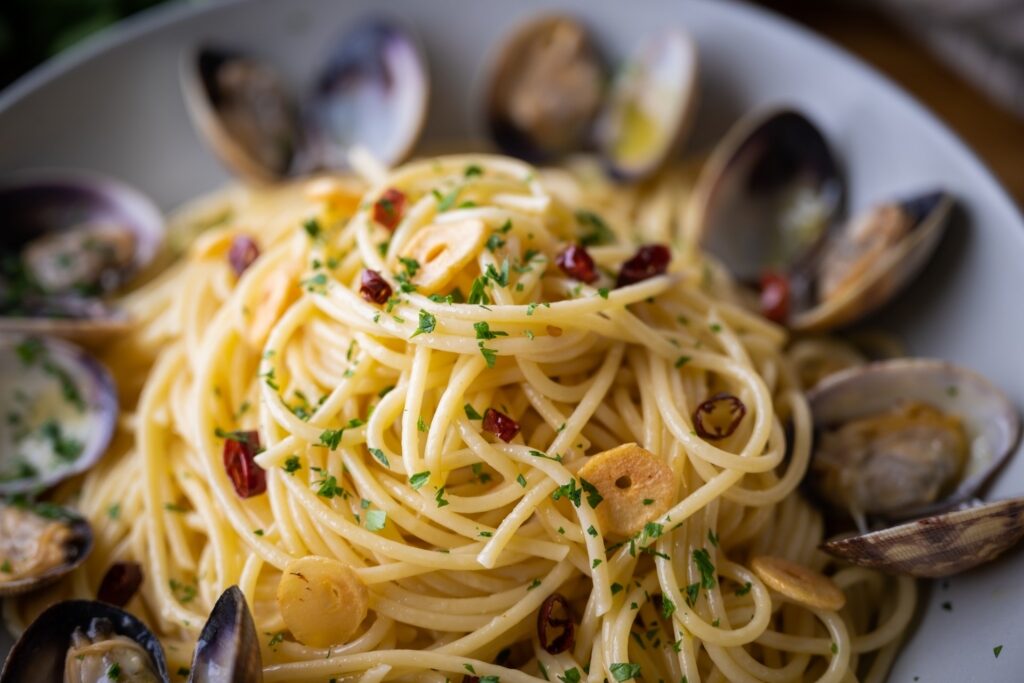
Spaghetti alle vongole
Despite its simplicity, controversy exists with the preparation of this dish. In Southern Italy, the sauce is tomato-free. In the north, you’ll occasionally find tomatoes in it.
Regardless, when you’re sitting at a table close enough to hear the sizzle of the surf, with a bowlful of fresh spaghetti alle vongole before you on a blue check tablecloth, it will be the best food in Italy.
Read: A Guide to Italian Wine & Food Pairings
Spaghetti Alla Carbonara
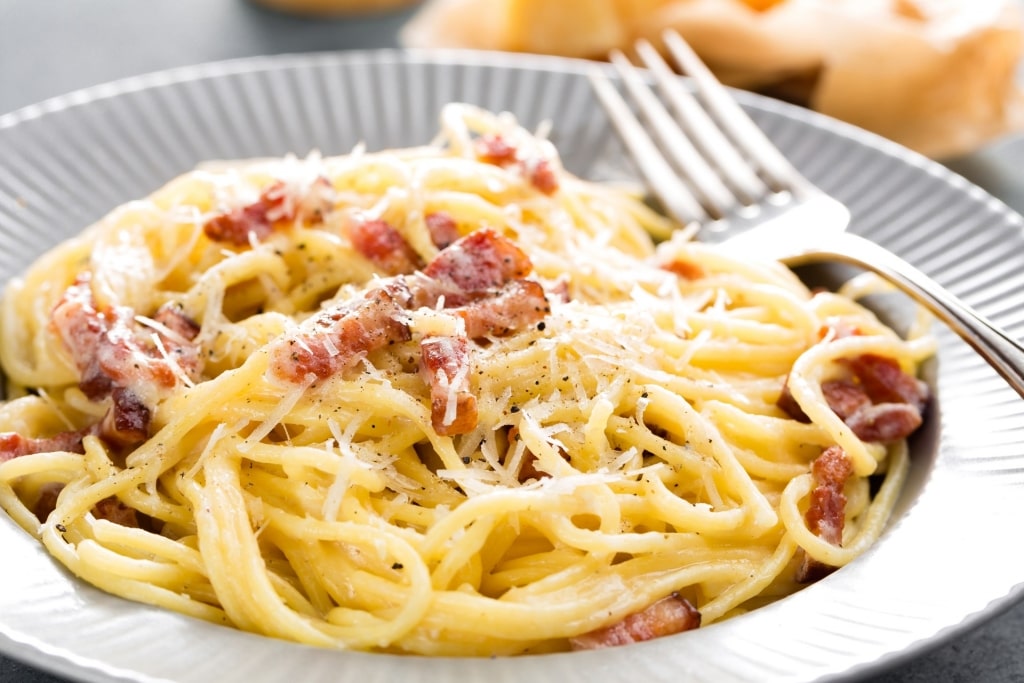
Spaghetti alla carbonara
Much maligned and rarely perfected, spaghetti alla carbonara is one of those dishes that many think of as the best food in Italy. However, when found abroad, it often bears only a passing resemblance to the Italian original.
The creaminess of this Roman pasta dish is not achieved through the addition of actual cream but through the careful marriage of pecorino romano, egg, and starchy pasta water.
Travel to Rome for carbonara that comes with the traditional pieces of “guanciale”—the cured pork jowl that supplies a depth of flavor not found in scissored scraps of bacon.
Cacio e Pepe
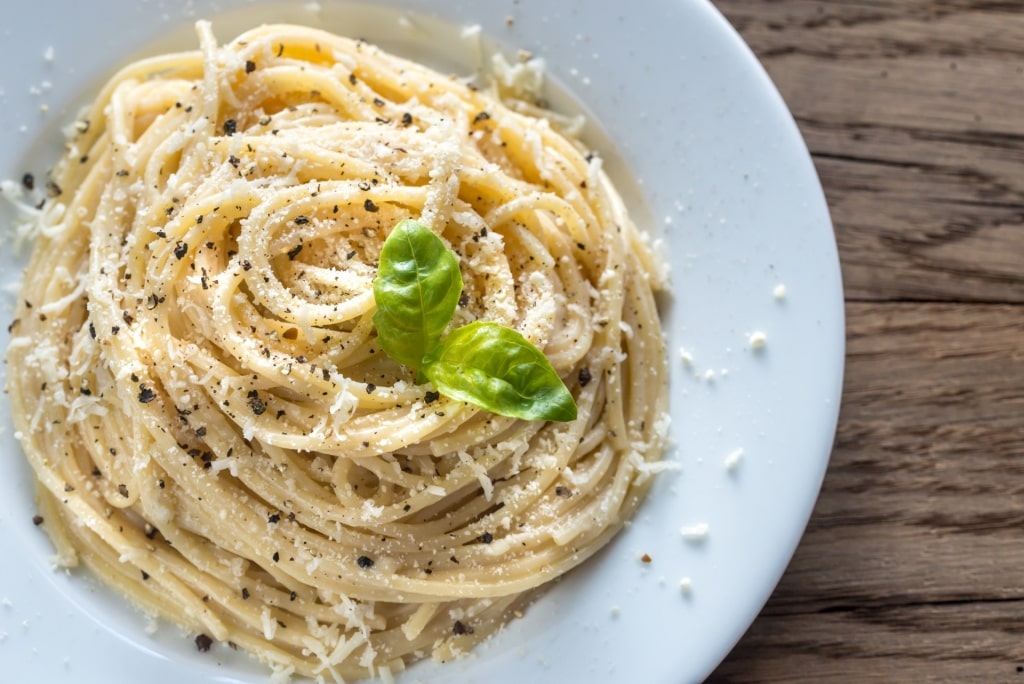
Cacio e pepe
One of the quartet of famous pasta dishes from Rome that includes carbonara, amatriciana, and gricia, cacio e pepe is arguably the simplest of the four. Recipes for cacio e pepe can be traced back to the Romans, and it’s also famously a dish enjoyed by shepherds.
Cacio e pepe is a classic for the end-of-the-month shopping cycle when your Roman larder’s clear of everything except for pecorino, pepper, and tonnarelli pasta (a slightly thicker version of spaghetti).
While easy and quick to make, the results are sublime, slippery, and rich with the spice of the pepper to keep your taste buds buzzing.
Tortellini en Brodo
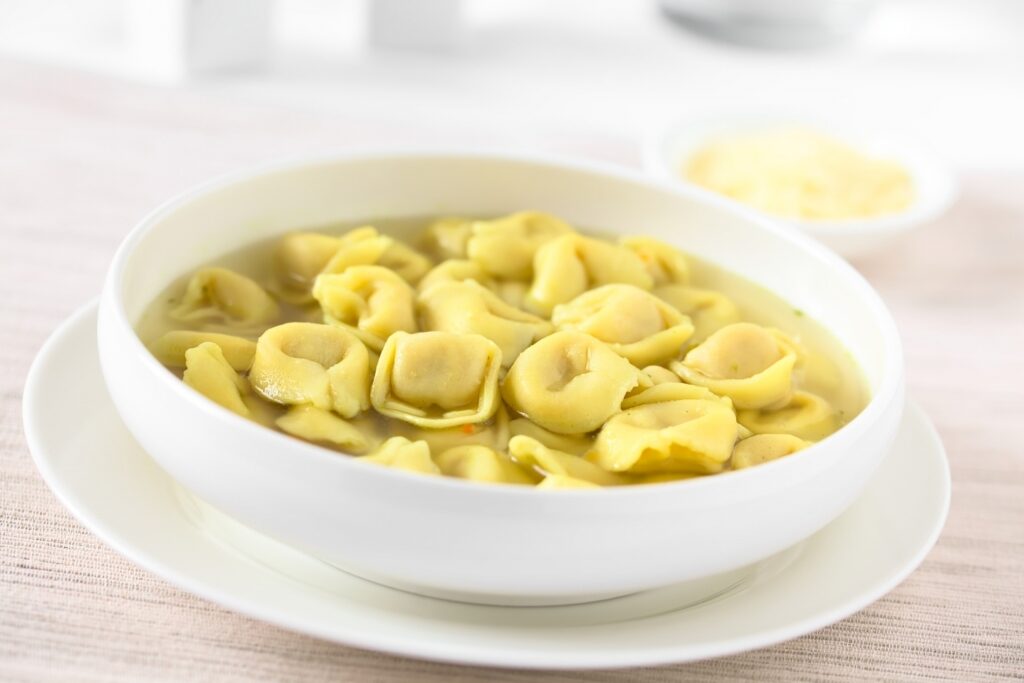
Tortellini en brodo
Tortellini en brodo is a painstakingly crafted dish, perhaps devised by a once lonely nonna with the intent of having the entire family help out in the kitchen at Christmas, when this dish is normally served.
Now you can have this magnificent bowl of stuffed pasta dumplings in broth year-round, such is its appeal. The key to its success is its unapologetic richness.
The tortellini are filled with a mix of prosciutto and Parmigiano Reggiano. This umami bomb is then dropped into a fragrant chicken broth.
There’s a slightly weird story about the shape of tortellini, a pasta that’s also known by the name of “Venus’ navel”.
The tale goes that an innkeeper was spying on Venus through a keyhole. So taken was he with the goddess’s belly button, that he created a pasta in its image.
Tiramisu
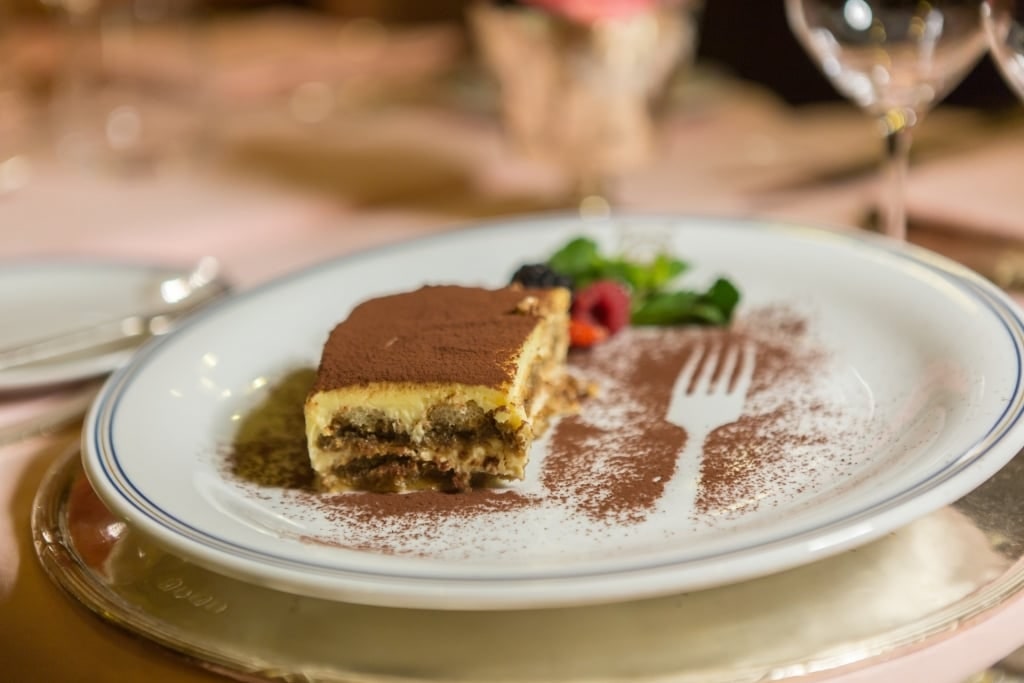
Tiramisu
Rarely do people look for the best Italian food in the dessert course. Italians haven’t the reputation for their talent with the sweet trolley that their francophone neighbors have.
However, an even quite casual search will turn up a multitude of immortal end-of-meal treats. And the grand ambassador of Italy’s desserts is tiramisu.
The traditional version is an iron fist in a sponge-fingered gauntlet created with some of the ingredients for which Italy is best known.
Coffee? Drenching the sponge fingers. Sweet cheese? Thick and creamy mascarpone coats the coffee-soaked base before cocoa is coquettishly sprinkled on top.
Tiramisu means “pick me up”. Choose this dessert, and it might indicate the beginning of your night rather than the end.
Gelato
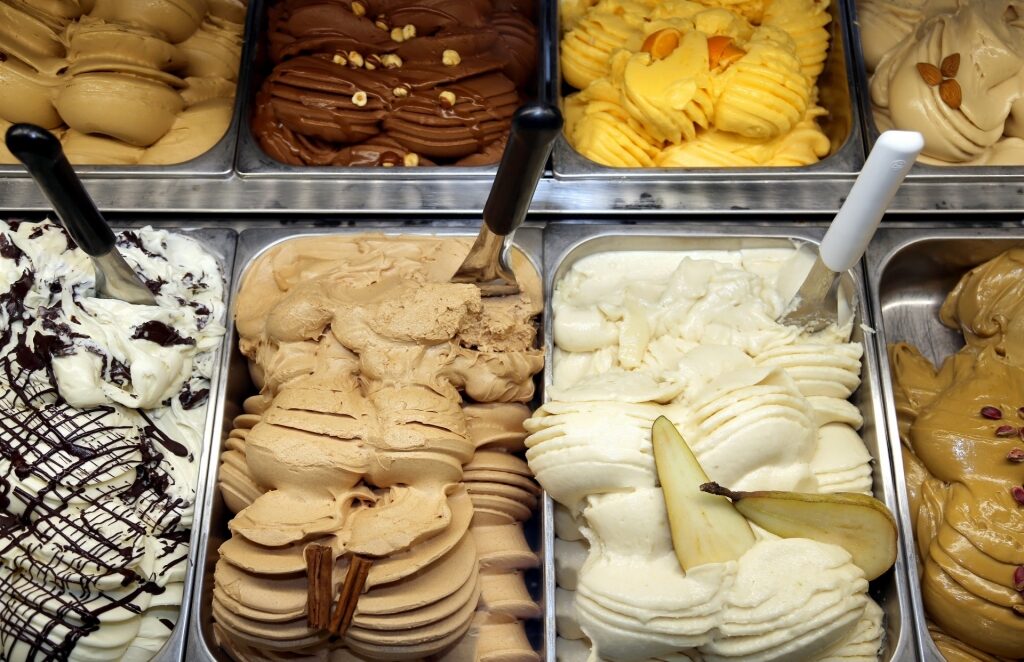
Gelato
For most children at least, hands down the best food in Italy is gelato. But Italian adults love it too, and there’s something meditative about the process of eating ice cream.
It’s an ideal food while on a walking tour of some of Italy’s most beautiful cities like Rome or Venice. People-watching in Italy while cooling off with a pastel-topped cone is an experience not to be missed.
Is gelato superior to ice cream? The difference is in the texture (which is thicker) and that it contains a third less butterfat.
This seems to give the flavor, whether pistachio, stracciatella, or cioccolato, extra vibrancy. When in Rome, stop into Neve di Latte near Piazza del Popolo for the all-important taste test.
Read: An Insider’s Look at Italian Food Culture
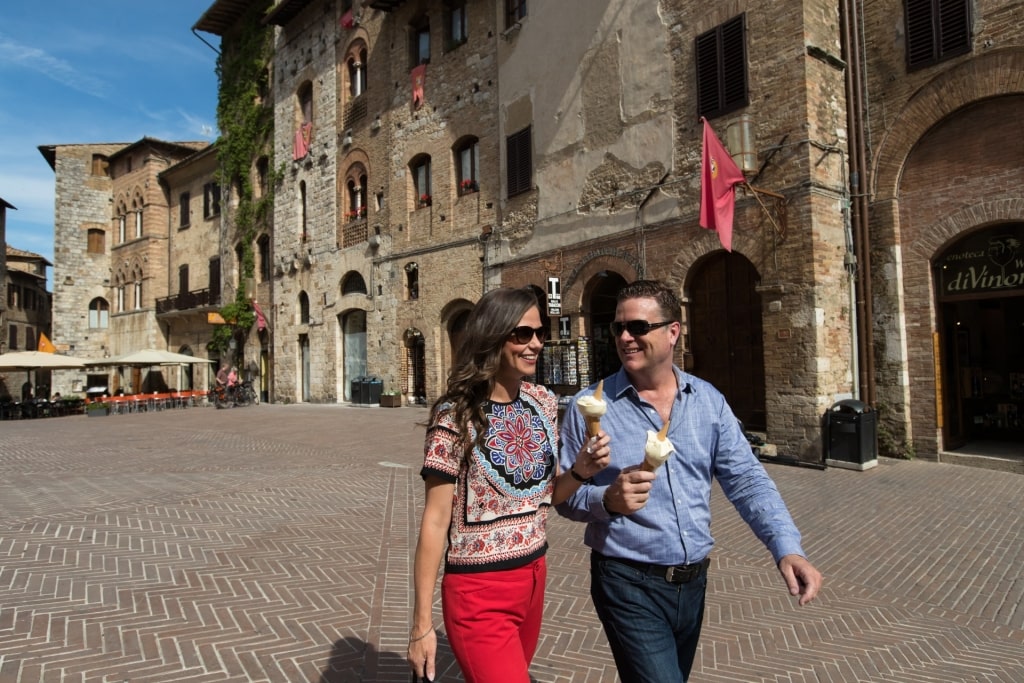
Gelato
Experience the best food in Italy—as well as its classical architecture, glittering coastline, and charming locals—on a cruise to this fabulous destination. Browse our cruises to Italy and book a cruise vacation to this bucket list destination today.






